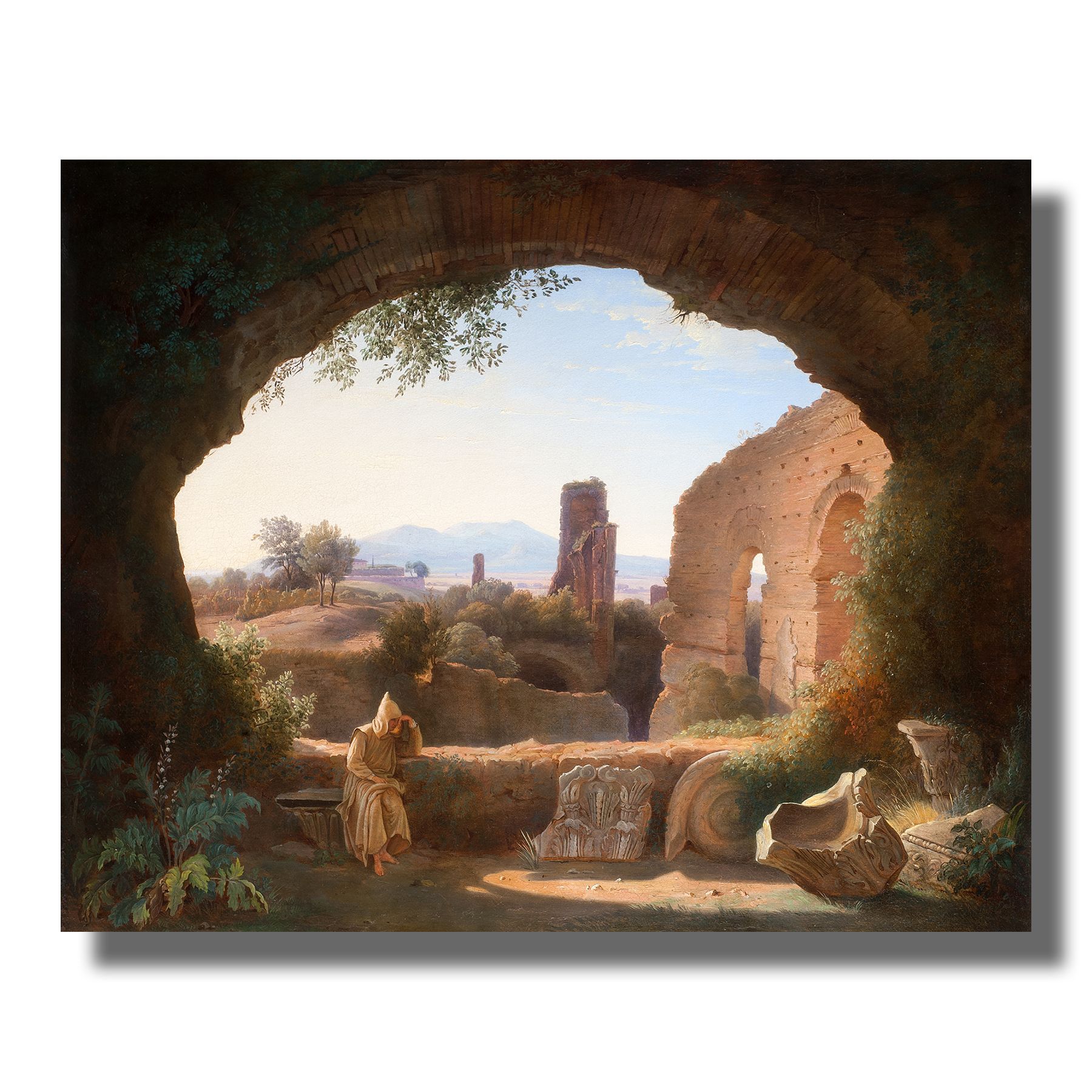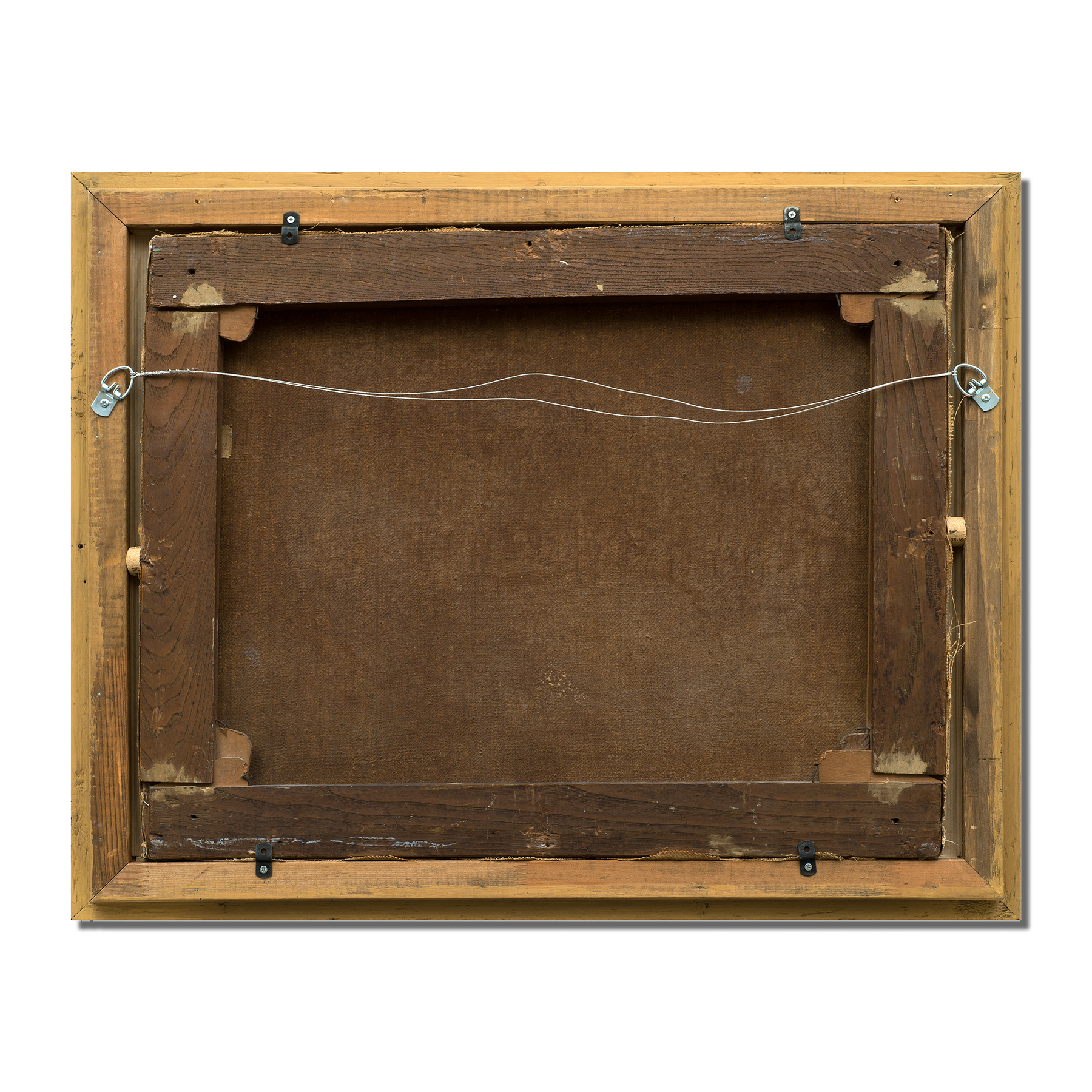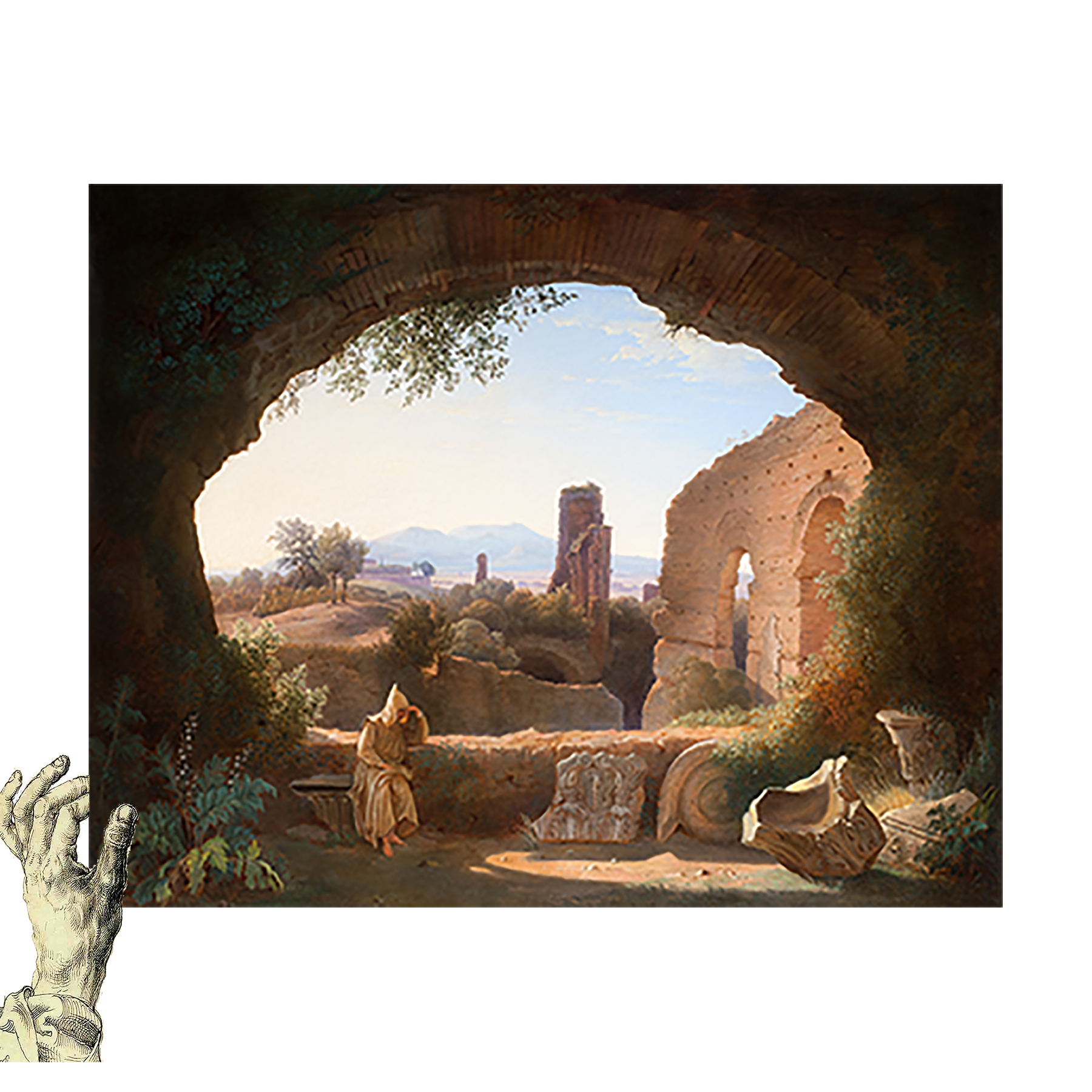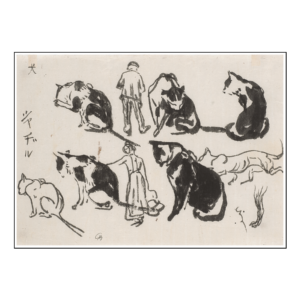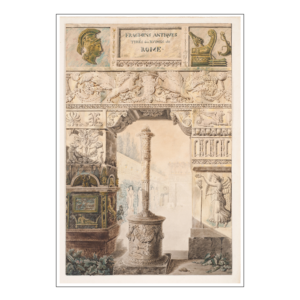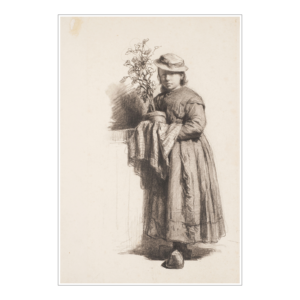Franz Ludwig Catel
Berlin 1778 – Rome 1856
A Carthusian monk absorbed in thought among the ruins of the Imperial Palace on the Palatine Hill in Rome, with a View of the Monte Celio and the Alban Hills and the Monte Cavo in the Distance
Oil on canvas.
510 x 630 mm – 20 1/16 x 24 13/16 in.
Literature – Andrea Stolzenburg, Master Paintings, 2020, Jean Luc Baroni et Marty de Cambiaire, p. 72-77, n° 14.
A pupil of the academies of Berlin and Paris, Franz Catel was already a well-trained artist when he arrived in Rome, late 1811. There, he became friendly with the Nazareens and, above all, discovered the joy of plein air painting, on which he concentrated intensely. He created a large number of small oil studies on board, but also of landscape paintings. Deeply attached to Italy, where he remained his all life, Catel declined a teacher position in the Academy of Berlin. With his second wife, he held a guest house on Piazza di Spagna in Rome, where they received many artists, painters and musicians, of all nationalities.
Catel has also treated the subject of this painting in a signed watercolor, nowadays in the Kupferstichkabinett of the Hambourg Kunsthalle (Inv. – Nr. 22944). Seated on antique remains, a monk meditates under the shelter of the ruined vault of the Imperial palace on the Palatin, which opens like an eye onto a sunbathed Roman landscape. In the background one can see the Alban Hills and their high point, the Monte Cavo, while in the middle ground a group of buildings is reminiscent of the Villa Mattei, which should not be visible from the Palatine, because it is normally hidden by many constructions. As often, while respecting topography, Catel transforms his environment in order to create an ideal landscape.
It is mainly in the 1820s-30s that Catel painted such meditative and monastic subjects, in the wake of his painter friend François Marius Granet, who was in Rome until 1824. The provenance of this painting suggests that it was bought directly from the artist by a French collector ; Catel spoke very good French, which served him well within the French milieu of art lovers he was closed to in Rome.
Typically romantic, the composition explores many contrasts – inside and outside, architecture and nature, shadow and light – to offer, as it seems, a serene meditation over past and present. This interpretation is also suggested by the half circular half oval shape of the opening on the luminous view over the campagna romana, two shapes propitious to meditation and known to be symbolic of cycles, infinity, time and life.
Condition report – On the original canvas.
Examination under U.V. light: negligible retouching in the ceiling of the grotto upper right. The paint is in a very good condition and well-preserved.
